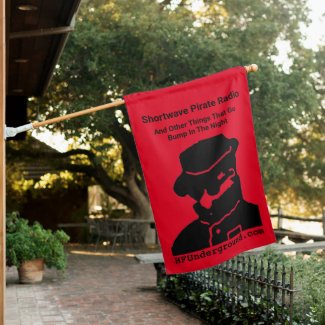16
General Radio Discussion / Re: RW rip: Armstrong Broadcast Returns to New Jersey in June, 42.800MHz FM.
« on: May 30, 2025, 0114 UTC »
Hey Thadood,
WAY COOL.
I am wondering about a few things though:
They didn’t say much about a schedule, is it 24 hours and if so, for how many days?
Also, they are running Wide FM.I wonder if it would sound too crummy on a NFM scanner ( which is all I have for the low band).
250 watts is not a lot of juice either. But you really can’t expect a temporary/ experimental station to run 50 Kw .I get it.
I DID just find a couple of old / very short boom TV antennas. It would be nice to have a BIT of gain. But they are flat line ( 300 ohm ? ) fed.Not sure how I would get them down to 50/75 ohm ball park without messing with baluns , etc.( which I don’t have) .
I wonder if they still make high/low Z inline transformers , like the old “back of the TV “ type.
The other alternative is simply a Vee dipole, with the elements swung 45 and 45 degrees inwards. As I “ recall “ from my experiments many years ago, this gave around 75 ohms.
NO gain, but “ some “ directivity if mounted correctly.
Perhaps from the big hill.
Prop has been mostly kind of crummy lately, especially above 12 M.
Not sure if Alpine would experience nigh time ducting to Boston or not.
In general, I probably need more info, time and LUCK.
de NQC
WAY COOL.
I am wondering about a few things though:
They didn’t say much about a schedule, is it 24 hours and if so, for how many days?
Also, they are running Wide FM.I wonder if it would sound too crummy on a NFM scanner ( which is all I have for the low band).
250 watts is not a lot of juice either. But you really can’t expect a temporary/ experimental station to run 50 Kw .I get it.
I DID just find a couple of old / very short boom TV antennas. It would be nice to have a BIT of gain. But they are flat line ( 300 ohm ? ) fed.Not sure how I would get them down to 50/75 ohm ball park without messing with baluns , etc.( which I don’t have) .
I wonder if they still make high/low Z inline transformers , like the old “back of the TV “ type.
The other alternative is simply a Vee dipole, with the elements swung 45 and 45 degrees inwards. As I “ recall “ from my experiments many years ago, this gave around 75 ohms.
NO gain, but “ some “ directivity if mounted correctly.
Perhaps from the big hill.
Prop has been mostly kind of crummy lately, especially above 12 M.
Not sure if Alpine would experience nigh time ducting to Boston or not.
In general, I probably need more info, time and LUCK.
de NQC



 ).
). , moving on with what I have left. I have MUCH bigger problems in my life now than poor radio reception.
, moving on with what I have left. I have MUCH bigger problems in my life now than poor radio reception.